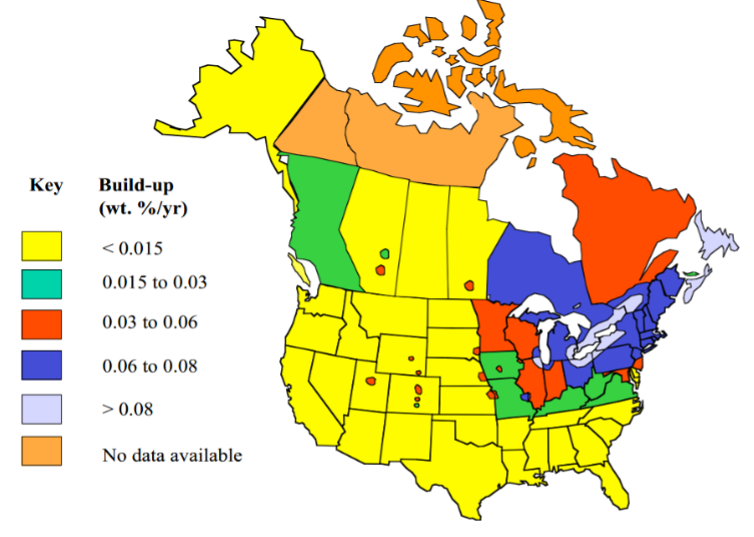Concrete Infrastructure: Recent Advancements and Needs with a Focus on North America
DOI:
https://doi.org/10.21809/rilemtechlett.2024.191Keywords:
Low carbon concrete, Chlorides, Corrosion, Climate impacts, Codes/standardsAbstract
This letter provides an overview of the continent’s diversity in geography and climatic exposure and the impact of chlorides on reinforced concrete structures in North America. Several research needs are identified, including those that arise as specifications begin to change from prescriptive to performance-based approaches. Further, the widespread changes in material compositions or chloride exposures, require important changes to specifications, design practices, or maintenance procedures. Related to reducing carbon emissions, there is a need to reduce clinker content in concrete mixtures, increase the use of novel cementitious and supplementary cementitious materials (SCM), and to understand the durability of such concretes. The following research efforts from a North American context are warranted: (i) investigating the long-term durability of novel cement and SCM systems, including non-Portland cement-based materials and those made with CO2 mineralization used to meet carbon emission targets; (ii) understanding climate change impacts of temperature and sea levels, including flood impact, on chloride exposure and chloride-induced corrosion; (iii) developing rapid and reliable tests to estimate durability in practice, particularly for scaling, freeze-thaw, salt damage, and chloride-induced corrosion; and (v) developing better understanding of the short and long-term implications of changes in constituent materials and exposure.

Downloads
Published
How to Cite
Issue
Section
License
Copyright (c) 2024 Pedro Castro-Borges, Burkan Isgor, Ibrahim Ogunsanya, Daman Panesar, Prannoy Suraneni, Jason Weiss

This work is licensed under a Creative Commons Attribution 4.0 International License.
Authors retain copyright of the articles published in RILEM Technical Letters and grant the journal the right of first publication with open access. The work is simultaneously licensed under Creative Commons Attribution 4.0 International License (CC BY 4.0) that allows others to share and adapt the work under the following terms: 1) a proper attribution is given in a form of bibliographic record with the DOI link directing to RILEM Technical Letters; 2) a link to the license is provided; 3) the changes (if any) are indicated.









